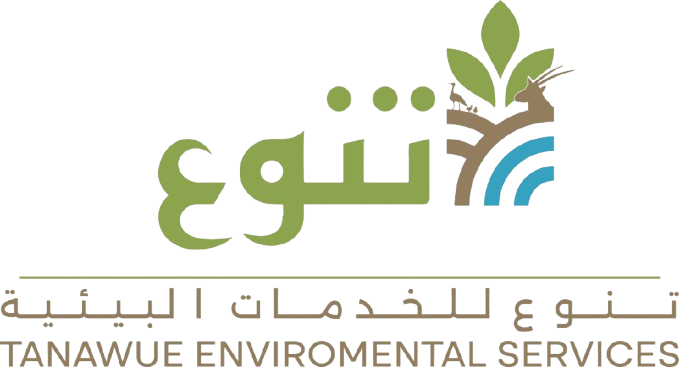Translocations
.
TanawuEnviro specializes in Translocations, a vital component of our wildlife conservation efforts in the UAE. Translocations involve the deliberate movement of wildlife from one location to another for various reasons, such as habitat restoration, conflict mitigation, or the survival of species threatened by human activities or environmental changes.
We conduct translocations with a focus on minimizing stress to the animals and ensuring their successful adaptation to new habitats. Our translocation services are driven by scientific research, comprehensive planning, and collaboration with key stakeholders to ensure long-term success.
Key Aspects of Translocations:
1. Planning and Feasibility Assessments
Before any translocation takes place, we conduct a thorough assessment to determine the best course of action for both the animals and their new habitat.
- Habitat Evaluation: We assess both the source and destination sites to ensure the new location can support the species being translocated, providing adequate food, water, and shelter.
- Species Suitability: Some species are more suited to translocation than others. We carefully evaluate which species will adapt successfully to new environments.
- Conservation Objectives: Our translocations are aligned with broader conservation goals, such as mitigating human-wildlife conflict, enhancing biodiversity, or supporting habitat restoration.
2. Pre-Translocation Procedures
The preparation phase is critical to the success of any translocation. Our experts ensure that both the animals and the destination habitat are ready for the move.
- Health Screening: We conduct thorough health checks to ensure the animals being moved are healthy and free of diseases that could affect other wildlife in the new habitat.
- Behavioral Conditioning: Animals are prepared for their new environment by gradually adapting them to the conditions they will face in the wild, including climate, food sources, and predator threats.
- Site Preparation: The destination habitat is prepared to ensure it can sustain the translocated species, often including measures like ensuring food availability, security from predators, and access to water.
3. Safe Transport and Release
One of the most delicate parts of the translocation process is the safe and humane transport of animals to their new location.
- Specialized Transport: We use state-of-the-art transport systems designed to minimize stress and discomfort during the move. Our vehicles are equipped with climate control and other safety measures to ensure the well-being of the animals.
- Stress Reduction Techniques: Throughout the translocation, we implement strategies to reduce stress on the animals, such as providing quiet and secure transport environments.
- Soft Release: In some cases, we use a “soft release” approach, where animals are first introduced into a controlled environment before full release into the wild. This allows them to acclimatize gradually.
4. Post-Translocation Monitoring
Once the animals have been released, ongoing monitoring is essential to ensure the success of the translocation.
- GPS and Radio Tracking: We use advanced tracking technologies to monitor the movement, health, and adaptation of the translocated animals in their new environment.
- Behavioral Studies: Regular observation of the animals’ behavior helps us understand how well they are adjusting to their new surroundings, including their ability to find food, water, and shelter.
- Health Monitoring: Our veterinary team continues to monitor the health of translocated species to prevent and address any potential issues that may arise post-release.
5. Community and Stakeholder Involvement
Successful translocations require cooperation with local communities, government bodies, and conservation organizations. We engage all stakeholders to ensure the success and sustainability of our projects.
- Local Engagement: We work with local communities to raise awareness about the importance of translocations and gain their support in protecting the species.
- Partnerships: Collaborating with national parks, conservation agencies, and NGOs, we ensure the translocated species receive the best possible care and protection.
- Long-Term Habitat Management: Post-translocation, we continue to manage and monitor the habitat to ensure it remains suitable for the species’ survival.
Why Translocations Matter?
- Habitat Restoration
Translocations help restore ecosystems by moving animals to areas where they can fill important ecological roles, such as controlling prey populations or spreading plant seeds. - Conflict Resolution
By relocating wildlife that is in conflict with human activities, such as farming or urban development, we help to reduce harm to both animals and people. - Protecting Endangered Species
Translocations are often a last resort to save species at risk of extinction due to habitat loss, climate change, or human-wildlife conflict. - Supporting Biodiversity
Moving species to areas where they can thrive helps maintain or increase biodiversity, contributing to healthier ecosystems.
Examples of Translocations by TanawuEnviro:
- Arabian Leopard Translocations: Moving critically endangered leopards to secure, protected areas within the UAE to ensure their survival and promote population growth.
- Oryx and Gazelle Translocations: Supporting the recovery of desert ecosystems by relocating Arabian Oryx and sand gazelles to regions where they can help maintain ecological balance.
- Birds of Prey: Relocating raptors and other birds of prey to areas where they can control populations of smaller animals, helping maintain the food chain.
Our Translocations Process:
- Planning and Risk Assessment
A comprehensive assessment to determine the viability of translocating species, including environmental impact, suitability of destination, and logistical considerations. - Site and Animal Preparation
Preparing both the animals and the habitat for a smooth transition, ensuring minimal stress and high chances of success. - Safe Transport and Release
Carefully planned and executed transport with attention to the well-being of the animals throughout the process. - Monitoring and Support
Continuous monitoring of the translocated animals to ensure they are adapting well and thriving in their new environment.
